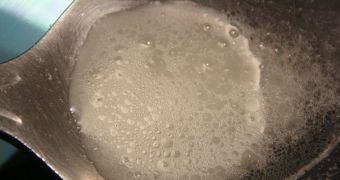Researchers investigating the behavior of people who abuse prescription drugs such as painkillers learned in a new study that these individuals are at a higher risk of becoming addicted to injectable heroin than peers.
The correlation holds especially true for people who have a history with both types of abuse. Taking way too much painkillers becomes a precursor to doing heroin, scientists at the Drexel University discovered.
Other factors that tended to lead to injected drug use included a family history of drug abuse, as well as past prescriptions for opioid drugs. The team, based at the DU School of Public Health, says that the statistical link between these habits stood out immediately.
Details of the new research effort appear in the latest issue of the International Journal of Drug Policy, PsychCentral reports. In order to tease out the connection, the team selected test subjects that had a history of being exposed to this type of behaviors.
“Participants were commonly raised in households where misuse of prescription drugs, illegal drugs, or alcohol, was normalized,” study leader Dr. Stephen Lankenau explains.
“Access to prescription medications – either from a participant’s own source, a family member, or a friend – was a key feature of initiation into prescription drug misuse,” he goes on to say.
Escalated patterns of opioid misuse were also found to be caused by pressure from peers, who tended to persuade people being prescribed opioid medication to sell extra quantities of drugs.
The team determined that for about 25 percent of all study participants, prescription opioid-based drugs were the first chemicals they had injected in their bodies. For 80 percent of subjects, opioids were the first drugs they abused, before moving on to heroin.
Many of the people involved in the new study had received drug treatment for depression, anxiety, or attention deficit hyperactivity disorder (ADHD) at least once. Nearly all suffered from some kind of psychological condition.
For 75 percent of the patients, first contact with opioid drugs occurred at the age of 14.6. All study participants were aged 16 to 25, and were residents of New York City and Los Angeles. Fifty youngsters were interviewed for this study.

 14 DAY TRIAL //
14 DAY TRIAL //